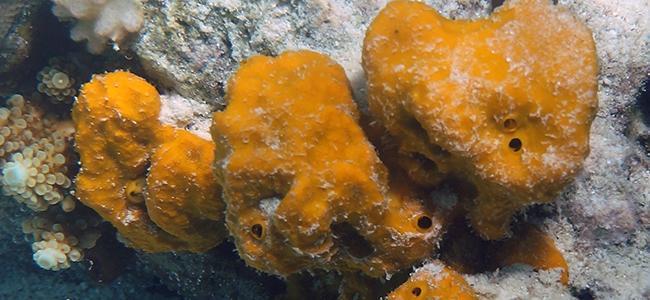Homoscleromorpha are a class of sponges, exclusively marine, that inhabit spaces with very little light and predominantly near the coast, between 8 and 60 meters deep. While this is true, there are some species that can be found in water depths of more than 1,000 meters. This group of sponges inhabits hard substrates, being generally encrusting in nature, and can usually be found in deeper caves and crevices.
Until almost the end of the 1990s, the Homoscleromorpha were included within the Demospongiae class, but molecular studies determined that they actually constituted the fourth phylum within the Porifera phylum (Calcarea, Demospongiae, Hexactinellida, Homoscleromorpha), and therefore came to be considered as an independent class. Species of the class Homoscleromorpha are heterogeneous in form, with the relatively simple, leuconoid morphology (reduced atrial cavity and massive appearance) being the most common. Most species lack spicules, but those species that do have them are siliceous in nature and are not as clearly organized as in the other classes. Another distinctive feature of the Homoscleromorpha is the presence of a basement membrane that is in contact with the rock surface, and whose components include type IV collagen, a molecule absent in the other classes of sponges.
Currently there are 117 known species belonging to the Homoscleromorpha class, which are grouped into two families (Oscarellidae and Plakinidae) in which there are 2 and 7 genera respectively.
The feeding of Homoscleromorpha, as with the other groups of sponges, is carried out by filtering the water column surrounding the specimens. By means of specialized cells, called coanocytes, Homoscleromorpha are able to generate a water current, which causes the water loaded with organic particles to enter the pores of the body of the specimen, where the organic particles are phagocytosed by specialized cells to digest them intracellularly.
